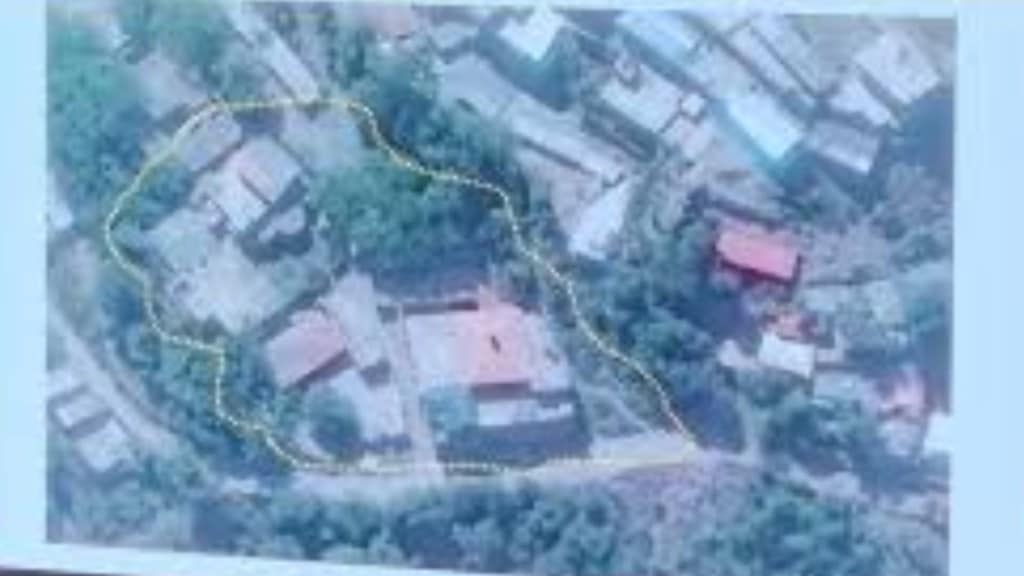In a bold counter-terror operation codenamed Operation Sindoor, India on Wednesday carried out precision air and ground strikes targeting nine key terrorist infrastructure sites across Pakistan and Pakistan-occupied Kashmir (PoK). The strikes come two weeks after the brutal terror attack in Pahalgam, Jammu & Kashmir, which claimed the lives of 26 civilians.
The Indian Ministry of Defence stated that the strikes targeted facilities “from where terrorist attacks against India have been planned and directed.” Intelligence inputs and sources confirmed that these sites served as operational bases for terrorist groups including Jaish-e-Mohammad (JeM), Lashkar-e-Taiba (LeT), and Hizbul Mujahideen (HM), with support from Pakistan’s Inter-Services Intelligence (ISI).
Expanded details on key targets of Operation Sindoor
Markaz Ahle Hadith, Barnala (PoJK) — Lashkar-e-Taiba
Located on the outskirts of Barnala town on Kote Jamel Road, this LeT stronghold lies just 500 metres from the town and 200 metres from the main road. It can house up to 150 terrorists, with 40–50 cadres regularly present. The facility is actively used for infiltrating terrorists and smuggling arms into the Poonch–Rajauri–Reasi sector of Jammu & Kashmir.
High-profile LeT operatives, including Qasim Gujjar, Qasim Khanda, Anas Jarar, and Khubaib (Mohd Amin Butt) operate from this Markaz. Notably, both Qasim Gujjar and Khubaib have been designated as terrorists under India’s Unlawful Activities (Prevention) Act (UAPA), sources revealed to ANI.
This staging center is tied to several deadly attacks including the Dhangri massacre (January 2023) and the Reasi bus attack (June 2024), which killed 7 and 9 civilians respectively. Central LeT leaders, including those from its political wing Jamaat-ud-Dawa and the Pakistan Markazi Muslim League (PMML), frequently visit this Markaz, according to the ANI sources.
Mehmoona Joya Facility, Head Marala, Sialkot District (Pakistan) — Hizbul Mujahideen
Situated near the Kotli Bhutta Government Hospital, this HM facility exemplifies how terror infrastructure is concealed within public institutions with the help of ISI. The base is used to infiltrate HM cadres into Jammu and provide them with training in weapons handling and operations.
The facility is commanded by Mohd. Irfan Khan alias Irfan Tanda, a veteran terrorist responsible for the 1995 Maulana Azad Stadium blasts in Jammu that killed 8 and injured 50. He also oversees weapons smuggling operations. Other top commanders here include Atta Al Rehman Alfezay (Abu Lala) and Maaz Bhai, both active in cross-border infiltration, as per the sources.
Despite being banned by multiple international entities—including the USA, UK, Australia, Canada, and the UAE—HM continues to raise funds and operate openly with state backing.
Sarjal / Tehra Kalan Facility, Shakargarh, Narowal District (Pakistan) — Jaish-e-Mohammad
Located just 6 km from the International Border near Samba, J&K, this JeM facility is concealed within a Primary Health Centre to avoid detection. It is JeM’s main launchpad for infiltration and also serves as a hub for underground tunnel construction, used for smuggling militants and war materials into India.
Operatives here have orchestrated attacks like the 2016 Pathankot Air Force Station attack. Key planners, including Ali Jan (Kashif Jan) and Shahid Latif, were based at this facility. Others such as Allah Baksh Musaib (nephew of JeM chief Masood Azhar), Muhammad Irfan Arif (Ghuman), Waseem Noor Jutt, and Abdul Rehman (Bhai Jigar) also operate from here, source stated.
The complex includes quarters near the hospital, used by JeM commanders, and usually hosts 20–25 active terrorists. Advanced communication facilities and drone launch capabilities are also in place, enabling cross-border arms and narcotics drops. The base has been under the supervision of Mufti Abdul Rauf Asghar, JeM’s de-facto chief.
The influence of foreign terrorist tactics is visible here—JeM operatives trained Khalistan Tiger Force (KTF) cadre Ramandeep Singh alias Goldy in para-glider operations, reportedly modeled after Hamas tactics.
Additional struck locations include
Markaz Subhan Allah, Bahawalpur, Pakistan – Situated approximately 100 kilometers from the International Boundary, this location serves as the headquarters of Jaish-e-Mohammed (JeM). JeM HQ involved in Pulwama attack planning.
Markaz Taiba, Muridke, Pakistan – LeT’s main training facility; hub for radicalisation, jihad sermons, and high-profile jihadi funerals including that of Hafiz Abdul Rehman Makki in December 2024. An Lashkar-e-Taiba (LeT) camp is situated about 30 km from the border, opposite Samba.
Gulpur – Located 35 km from the Line of Control (LoC) in the Poonch-Rajouri sector.
Bilal Camp – A JeM launchpad located in Muzaffarabad, POK.
Maskar Raheel Shahid, Kotli, PoJK – Oldest HM camp with residential barracks, arms storage, and secluded access. Situated approximately 15 km from the Line of Control (LoC) opposite Rajouri, the LeT camp in Kotli was one of the terrorist infrastructure sites targeted in Operation Sindoor.
Shawai Nallah Camp, Pakistan – LeT’s long-running training and recruitment base since early 2000s.
All the targeted groups—JeM, LeT, and HM—are designated terrorist organisations by the UN and countries including the USA, UK, and India. Yet, these groups continue to function with covert and overt support from Pakistani state institutions, source cited.
This is the first major cross-border retaliation since the Balakot airstrikes in 2019, marking a renewed Indian doctrine of proactive counter-terror response. The Indian government has not officially commented on Pakistan’s reaction to the strikes, though military assets remain on alert along the LoC and International Border.

